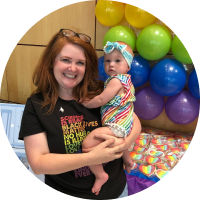Non-Verbal Reminders for Students
Today I wanted to share some ideas for students who need frequent reminds to stay on task, complete their work, and use safe hands and feet.
During my first few years of teaching, I focused a LOT on positive relationships with my kids. That meant I really focused on the way I talked to my students. Instead of “sit down,” I might say “Frankie, please sit on your bottom.” Unfortunately, really quickly I became a broken record. During a read-aloud, I might say the same thing to the same kid 5 times. One time my administrator mentioned I might try non verbal reminders with one of my students. “I noticed you said his name a lot during your lesson.” I think that was 8 years ago, and it really stuck with me.
From that moment, I’ve come up with many ideas for supporting students without interrupting the flow of the lesson, and calling attention to them. Even if we are very kind and positive, it’s still publicly correcting our students. All of these resources are available in my Behavior Survival Kit.
Expectation Cards
Picture reminders are so helpful to keep around our room and at our students’ desks. I like to keep them small and on a ring, and we also use hang them on the walls.
This sheet, for example, I’d keep by our whole group/carpet area. Instead of stopping a lesson and saying something, I could quickly point to the picture reminder. Of course, before we use these, we’d need to go over them with our students. You could also ask them to illustrate each expectation .
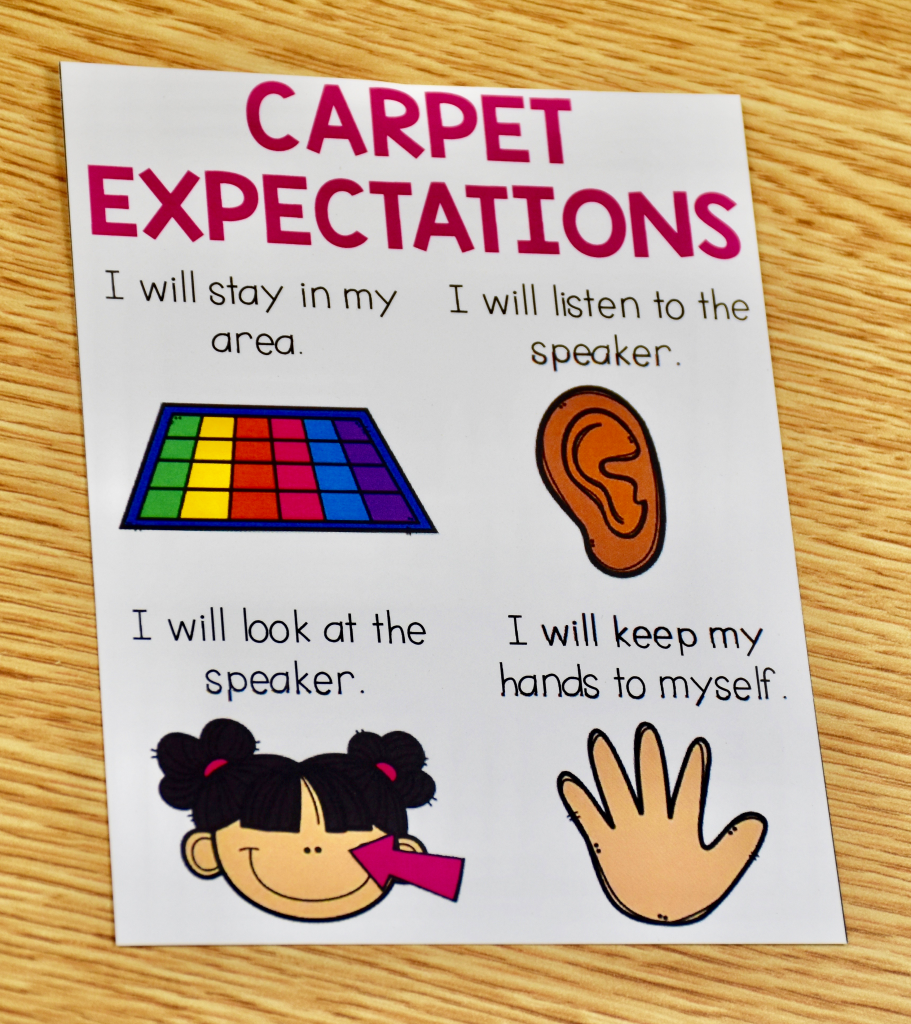
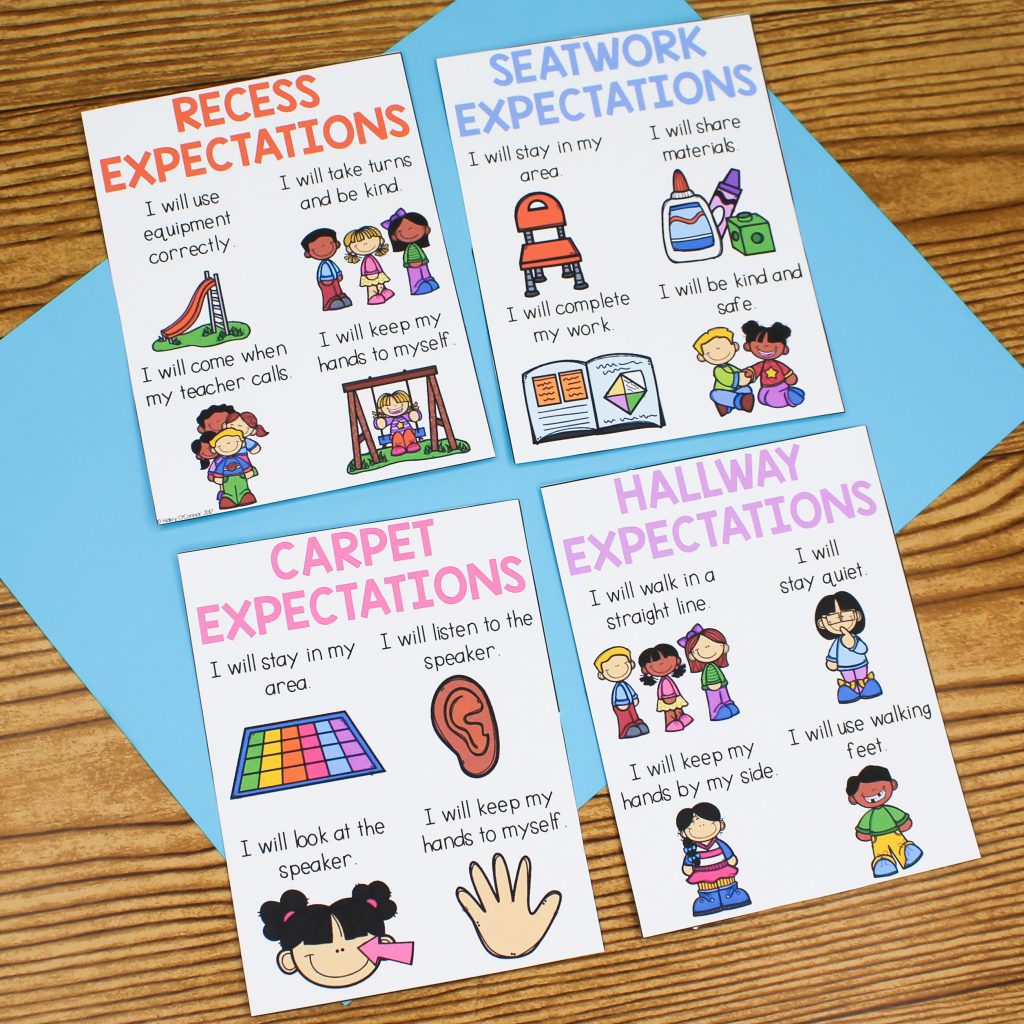
Check in Cards
Often when our students are struggling with their behavior, they may be overstimulated. They may need sensory input (running around, pushing others), or are overwhelmed. Taking a break is a great way for students to “recenter.” This is NOT time-out. A break might look like sitting in a quiet corner with a stuffed animal, or even going to get a drink of water. Whatever you set up with your class is what your students should do when they see this card. If something is happening, and you know they need a break, you can discreetly pass this to them as a reminder. Hopefully, over time, they’ll begin to recognize their own cues and can ask for it.
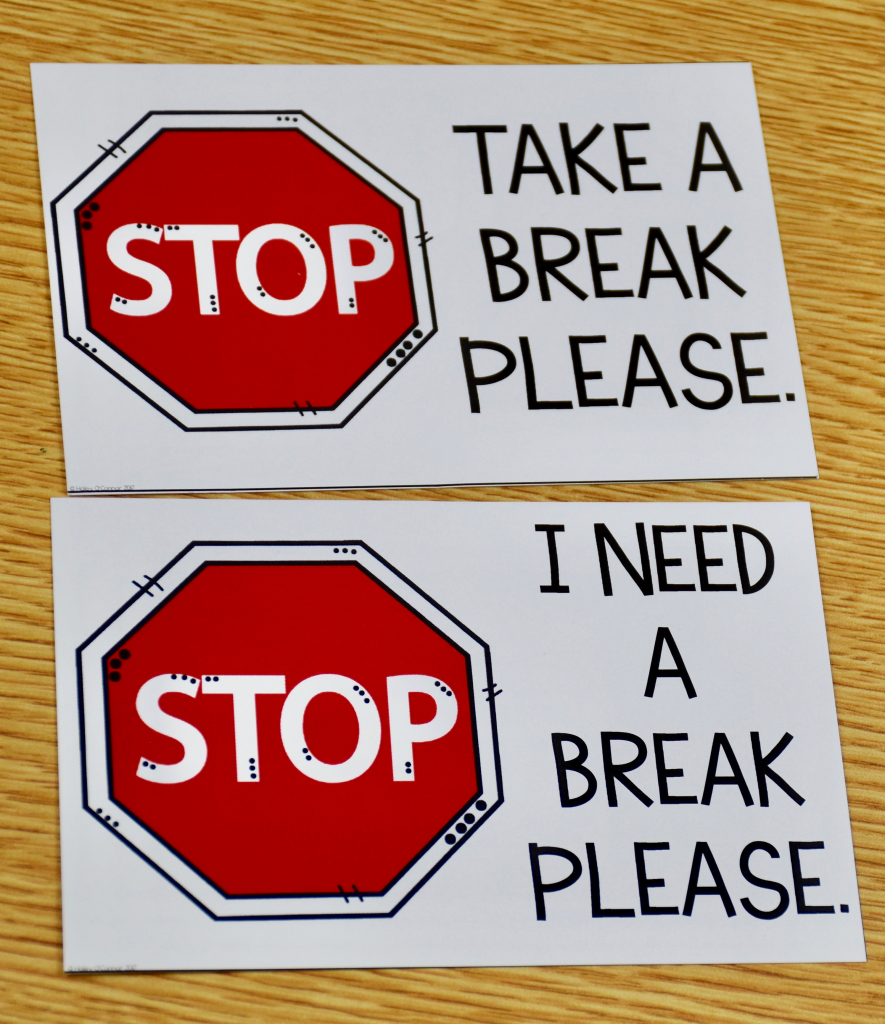
Picture Reminders
These are similar to the expectations cards, just a little more specific. I really like to keep these on a ring to show students individually. One example for use might be in the hallway. If you notice students putting their hands on each other, you could silently hold up the “safe hands” card or walk beside them and show it. Some teachers also choose to attach these to their whole group easel. Then, during lessons, you could quickly tap a reminder for students.
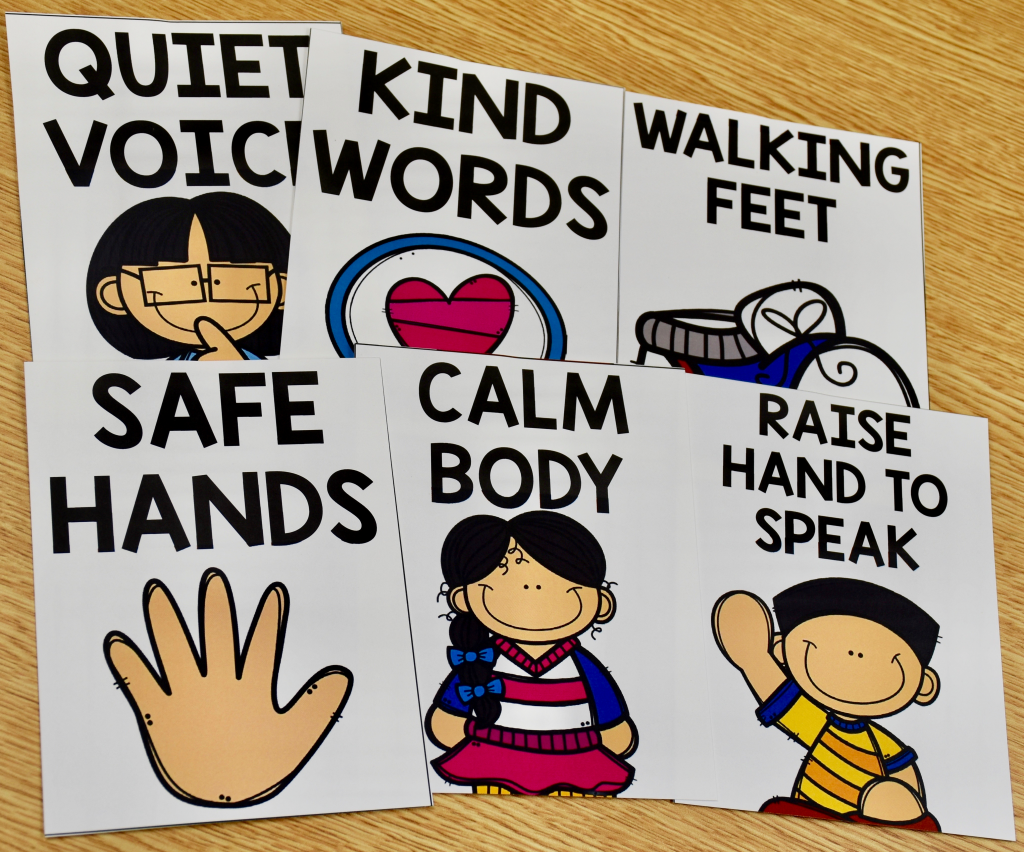
Secret Symbol
The final tip I have for you is creating a “secret signal” with your students. This would work especially well for a student that has specific behavior goals. For example, you might have a student that consistently shouts out. After talking with them about their goal, work with them to come up with a secret symbol. Ideally it would be something silly that would really get their attention. You might wiggle your ear, tap your nose, or even stick out your tongue. That student would know you are reminding them without calling attention to them.
If you’d like to use any of these tools in your classroom, be sure to check out my Behavior Survival Kit. There are over 200 pages of resources for supporting your students with their behavior, and creating positive relationships with them.
